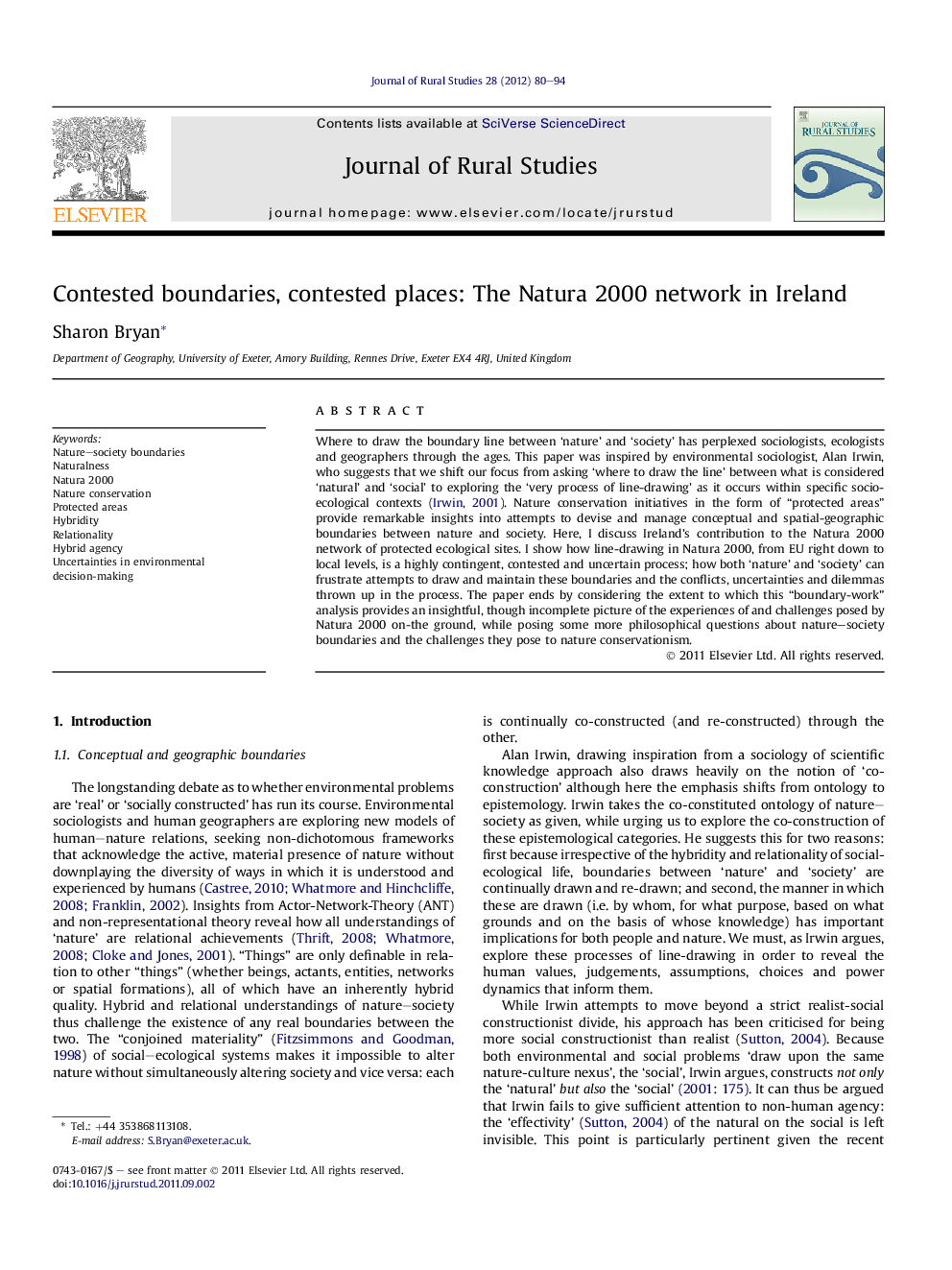| Article ID | Journal | Published Year | Pages | File Type |
|---|---|---|---|---|
| 92698 | Journal of Rural Studies | 2012 | 15 Pages |
Where to draw the boundary line between ‘nature’ and ‘society’ has perplexed sociologists, ecologists and geographers through the ages. This paper was inspired by environmental sociologist, Alan Irwin, who suggests that we shift our focus from asking ‘where to draw the line’ between what is considered ‘natural’ and ‘social’ to exploring the ‘very process of line-drawing’ as it occurs within specific socio-ecological contexts (Irwin, 2001). Nature conservation initiatives in the form of “protected areas” provide remarkable insights into attempts to devise and manage conceptual and spatial-geographic boundaries between nature and society. Here, I discuss Ireland’s contribution to the Natura 2000 network of protected ecological sites. I show how line-drawing in Natura 2000, from EU right down to local levels, is a highly contingent, contested and uncertain process; how both ‘nature’ and ‘society’ can frustrate attempts to draw and maintain these boundaries and the conflicts, uncertainties and dilemmas thrown up in the process. The paper ends by considering the extent to which this “boundary-work” analysis provides an insightful, though incomplete picture of the experiences of and challenges posed by Natura 2000 on-the ground, while posing some more philosophical questions about nature–society boundaries and the challenges they pose to nature conservationism.
